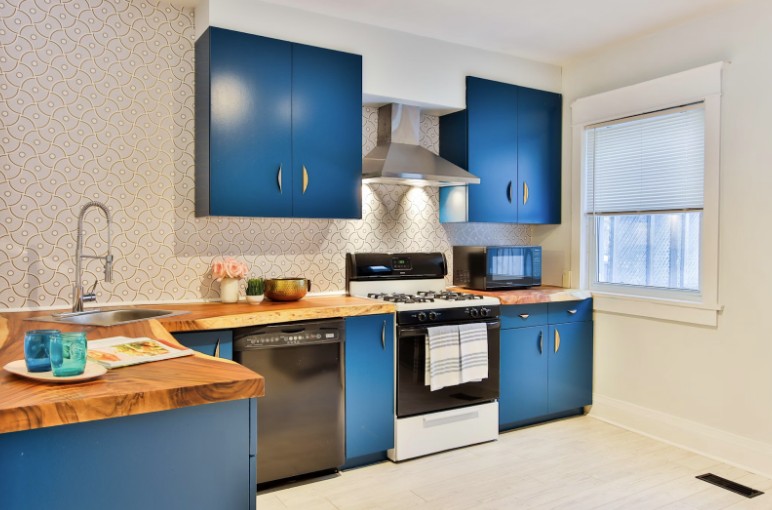Are you looking to enhance your kitchen's environmental friendliness while maintaining its visual appeal?
As homeowners prioritize environmental responsibility more than ever before sustainable kitchen design continues to become increasingly popular. Recent data demonstrates that 92% of homeowners incorporate sustainable features into their kitchen renovation projects.
The good news?
You can create an environmentally friendly kitchen design without losing sight of style or practicality. Sustainable kitchens provide equal beauty and efficiency compared to traditional kitchens while offering potential improvements.
What You'll Discover
Why Sustainable Kitchen Design Matters
Top Eco-Friendly Material Choices
Energy-Efficient Appliances and Fixtures
Sustainable Kitchen Layout and Space Utilization
Budget-Friendly Eco Options
Working with Creative Kitchen Designers
Why Sustainable Kitchen Design Matters
Let's face it – kitchens are resource-intensive spaces. These areas consume large quantities of water and energy as well as materials which positions them as perfect subjects for green upgrades.
But here's the thing...
Selecting sustainable kitchen design benefits environmental health and saves your money. Homeowners select sustainable options primarily because of long-term cost benefits reported by 74% of them while 54% value environmental friendliness.
The value of your home can increase when you make sustainable choices but many homeowners are unaware of this benefit. Growing environmental awareness leads buyers to pay higher prices for homes equipped with existing eco-friendly features.
Top Eco-Friendly Material Choices
The selection of materials fundamentally establishes a sustainable kitchen. Explore these popular sustainable options that unite environmental consciousness with modern design trends.
Recycled and Reclaimed Materials
The current leading trend in sustainable kitchen design revolves around the utilization of recycled and reclaimed materials. This includes:
Kitchen countertops created from recycled glass and paper materials as well as plastic fibers
Flooring, cabinets, and open shelving can be created from reclaimed wood.
Recycled metal for fixtures and hardware
Sustainable materials reduce waste and add distinctive character along with personal stories to kitchen designs. By working with creative kitchen designers who specialize in sustainable materials you can easily incorporate these options into your kitchen design.
Sustainable Wood Options
Opt for FSC-certified wood when you need new wood products instead of reclaimed wood. The certification indicates that wood products originate from forests that are managed to deliver positive environmental outcomes along with social and economic advantages.
Bamboo stands out as a sustainable material choice which is becoming increasingly popular. Some bamboo species grow at an exceptional rate reaching up to 3 feet daily. Bamboo ranks among the most renewable materials due to its rapid growth rate.
Energy-Efficient Appliances and Fixtures
Kitchen appliances and fixtures consume significant amounts of both energy and water. Switching to energy-efficient models will lower both your utility expenses and environmental footprint.
Energy-Saving Appliances
Energy-efficient appliances have transitioned from niche items to essential mainstream products. The majority of homeowners selecting energy-efficient appliances during kitchen renovations reaches 61%.
When shopping for new appliances, look for:
ENERGY STAR certification
Induction cooktops use 90% of their energy for cooking while gas cooktops only use about 40%.
Smart features that optimize energy use
The appliance you already have in your home may very well be the most energy-efficient one you can use. Consider maintaining your appliances until they require replacement if they haven't yet reached the end of their lifespan.
Water-Saving Fixtures
The implementation of water-efficient fixtures stands as a key element in sustainable kitchen design with 34% of homeowners opting for these installations during their renovations.
The latest water-saving fixtures maintain full functionality while delivering exceptional efficiency. Choose touchless faucets which save water alongside low-flow faucets with aerators and water filtration systems to cut back on bottled water usage.
LED Lighting
Lighting plays an underrated role in sustainable kitchen design although 65% of homeowners select LED bulbs during their kitchen upgrades. LED lighting requires much less energy compared to traditional lighting options while its extended lifespan cuts down on the disposal of burnt-out bulbs.
Task lighting can be enhanced with under-cabinet LED strips while incorporating smart lighting systems that adapt to daily time changes and optimizing natural light through windows and skylights.
Sustainable Kitchen Layout and Space Utilization
The sustainable kitchen requires not only eco-friendly materials and appliances but also a design that optimizes efficiency and functionality.
Open Kitchen Concepts
Open kitchens remain a popular choice for homeowners as 40% of them transform their kitchens into more open spaces connecting to other areas of their homes. This trend aligns well with sustainability for several reasons: An optimized kitchen design supports sustainability by delivering better air flow throughout the space while distributing natural light evenly across the room and providing efficient heating and cooling systems alongside adaptable spaces that fully utilize available area.
Smart Storage Solutions
A sustainable kitchen depends on well-planned storage options. Designing your kitchen storage properly helps to minimize food waste while removing the need for excessive packaging and allows you to use your available space more effectively.
Add pull-out pantry systems for better visibility and accessibility to your kitchen storage strategy along with dedicated recycling stations, vertical storage solutions that optimize wall space and custom cabinets built for particular items to avoid space waste.
Renovated kitchens predominantly choose the transitional style because it combines traditional and modern elements to create smart storage solutions that boost functionality.
Budget-Friendly Eco Options
Many people incorrectly believe that sustainable kitchen design requires a high budget. The median cost for minor kitchen remodels has risen by 40% annually to reach $14,000 but eco-friendly solutions exist for all financial plans.
Phased Approach
Sustainable kitchen improvements can be achieved through partial renovations rather than complete overhauls. Start with easy modifications like LED lighting conversion and wait to replace appliances until they become unusable before adding sustainable features incrementally according to your financial capacity.
DIY Upcycling
Upcycling which turns current materials into new useful items provides both cost-effective and sustainable solutions. Many homeowners upcycle their kitchens by giving cabinets new life with low-VOC paint while others transform old furniture pieces into kitchen islands or use recycled wood to create open shelving.
Working with Creative Kitchen Designers
Increased environmental consciousness has produced greater demand for sustainable materials in kitchen design which reflects the wider trend of living responsibly. The growing trend has led numerous designers to develop specializations in eco-friendly kitchen design.
Choosing creative kitchen designers who understand sustainability contributes significantly to the success of your project. Professional kitchen designers keep abreast of sustainable materials to guide you through the intricate world of eco-friendly options.
These designers guide your selection toward authentic sustainable products while avoiding greenwashing and manage to locate rare recycled or reclaimed materials that fit your budget and balance design and eco-friendly functionality.
Wrapping It Up
Sustainable kitchen design represents our increasing understanding of the environmental consequences caused by our personal choices. Your kitchen design benefits from sustainable features whether you undertake a full renovation or proceed with incremental improvements.
Energy and water efficiency measures result in reduced utility costs.
Healthier living environment with natural, non-toxic materials
Reduced environmental impact through thoughtful material choices
Green features can boost home value because they are becoming more sought after.
Sustainable kitchen design stands out because it achieves goals without needing compromises. Modern eco-friendly products stand out with their style and functionality while frequently outlasting traditional alternatives in terms of durability. When you adopt these design trends you create both a beautiful living space and help build a healthier world for future generations.










